Populus fremontii, Fremont Cottonwood
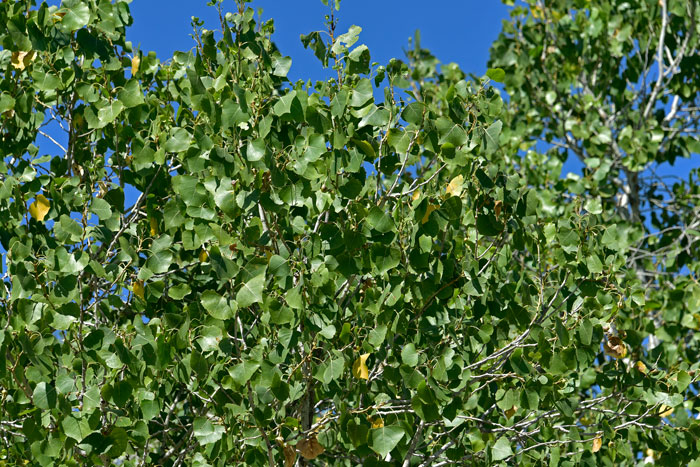
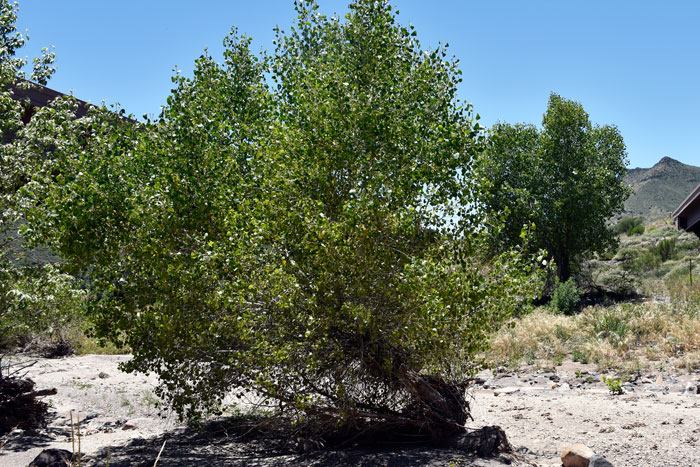
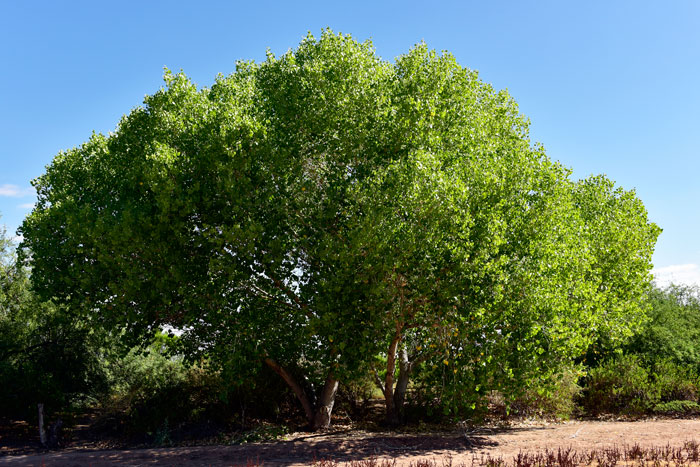
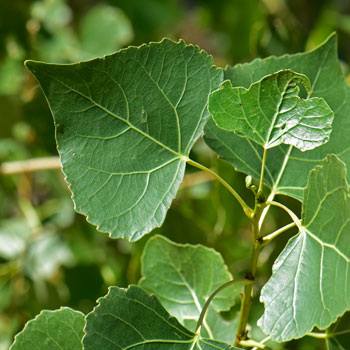
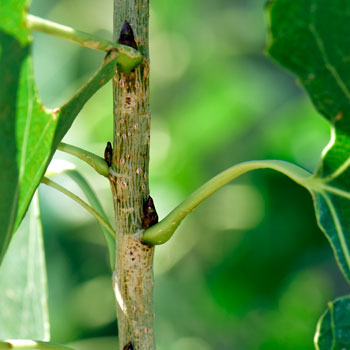
Scientific Name: Populus fremontii
Common Name: Fremont Cottonwood
Also Called: Alamo Cottonwood, Arizona Cottonwood, Cottonwood, Gila Cottonwood, Fremont's Cottonwood, Western Cottonwood (Spanish: Álamo)
Family: Salicaceae or Willow Family
Synonyms: (Populus deltoides var. fremontii, Populus macdougallii)
Status: Native
Duration: Perennial
Size: Up to 30 feet (9.1 m) or more (90 feet (27.4 m)).
Growth Form: Tree, large fast growing riparian tree; trunk diameter of 4 feet not uncommon, open crown; bark tannish or whitish, smooth with deep furrows on the main trunk; twigs tannish-white or yellowish, young twigs with pubescence, large main branches, top or crown of tree wide and flat-topped, older bark gray-brown and deeply furrowed, winter buds yellow-brown,resinous and usually hirsute.
Leaves: Green, bluish-green; variable across range and sub-species, deciduous; leaves cordate to sub-cordate; leaves with petiole; margins scalloped; prominent white lined leaf veins; leaves turning yellow in fall.
Flower Color: Green or yellowish-green; dioecious; flowering stem (inflorescence) are catkins, male and female catkins are on the same tree; fruit is a rounded or ellipsoid capsule; seeds with cottony hairs for wind dispersion.
Flowering Season: February to April or May; March to April in California and Texas.
Elevation: Sea Level to 7,399 feet (0-2200 m)
Habitat Preferences: Thrives in riparian areas such as rivers, streams, perennial washes, often grows in pure stands or may be the dominant or co-dominant species with Goodding's Willow and other primary riparian species such as Black Cottonwood, Salix spp., Walnut, and Velvet Ash.
Recorded Range: Fremont's Cottonwood is found in the Southwestern United States in AZ, CA, CO, NM, NV, TX and UT. In Arizona it is found almost throughout the state with few or no records in Apache county.
North America & US County Distribution Map for Populus fremontii.
U.S. Weed Information: No information available.
Invasive/Noxious Weed Information: No information available.
Wetland Indicator: No information available.
In the Southwestern United States, Arizona there are 5 species of Populus, in California, Nevada, New Mexico and Texas each have 6 species and Utah has 7 species. All data is approximate and subject to taxonomic changes.
There are 2 sub-species in Populus fremontii;
Populus fremontii subsp. fremontii, Fremont Cottonwood, (AZ, CA, CO, NM, NV, UT);
Populus fremontii subsp. mesetae, Fremont Cottonwood, (AZ, TX).
Comments: Fremont Cottonwood is common in southwestern United States deserts where it is found along streams commonly with Arizona Walnut (Juglans major), Goodding's Willow, Salix gooddingii and Arizona Sycamore (Platanus wrightii).
Populus fremontii, along with co-dominant willow trees, provides important habitat for a wide variety of birds and many other dessert and riparian dwelling species in the Southwestern United States. Fremont's Cottonwood is a conspicuous and important riparian species that provides significant perches and nesting habitat for large and small birds and provides cover and shade for a host of mammals, including deer, squirrels, raccoons, ring-tails, beavers and an assortment of rodents.
Populus fremontii may hybridize with Narrowleaf- and Black- Cottonwood, however, the 2 species overlap with each other apparently without hybridization.
Fremont's Cottonwood named in honor of John Charles Fremont (1813-1890).
Livestock also benefit from shade and cover from these trees.
For a comprehensive thoroughly documented review of Populus fremontii see the USDA USFS Fire Effects Information System, or FEIS.
Cahuilla Drug, Analgesic, Infusion of bark and leaves used to wet a handkerchief and tie it around the head for headaches.
Diegueno Drug, Dermatological Aid, Infusion of leaves used as a wash or poultice of leaves applied to bruises, wounds or insect stings.
Havasupai Fiber, Building Material, Wood used for fence posts and in the construction of shades and houses.
Mendocino Indian Drug, Dermatological Aid, Decoction of bark used as a wash for bruises and cuts.
Pima Drug, Dermatological Aid, Decoction of plant used as a wash for sores.
Yuki Drug, Cold Remedy, Infusion of bark or leaves taken for colds.
Yuki Drug, Dermatological Aid, Infusion of bark or leaves taken for cuts and sores.
See all ethno-botanical uses at Native American Ethnobotany, University of Michigan, Dearborn.

